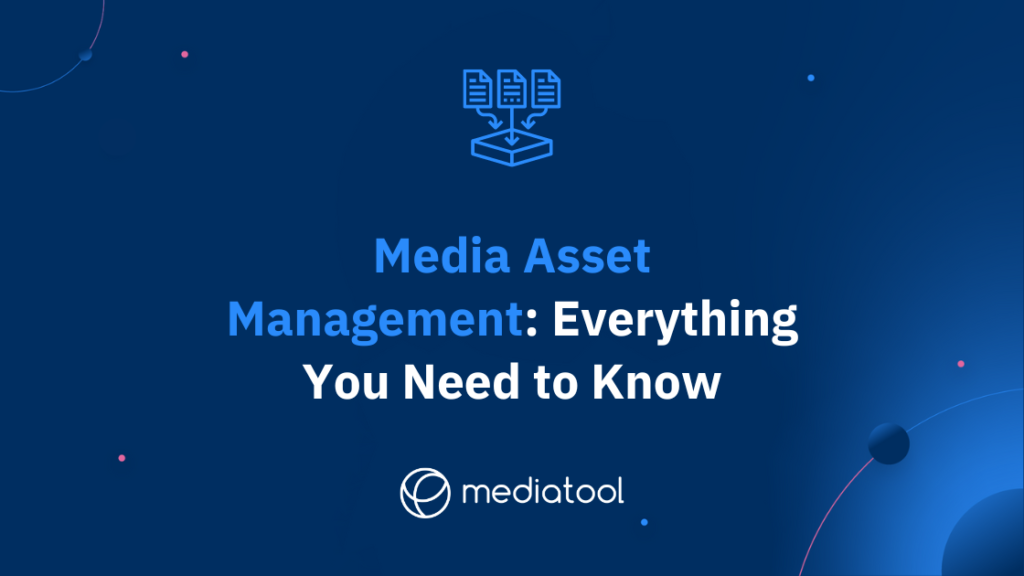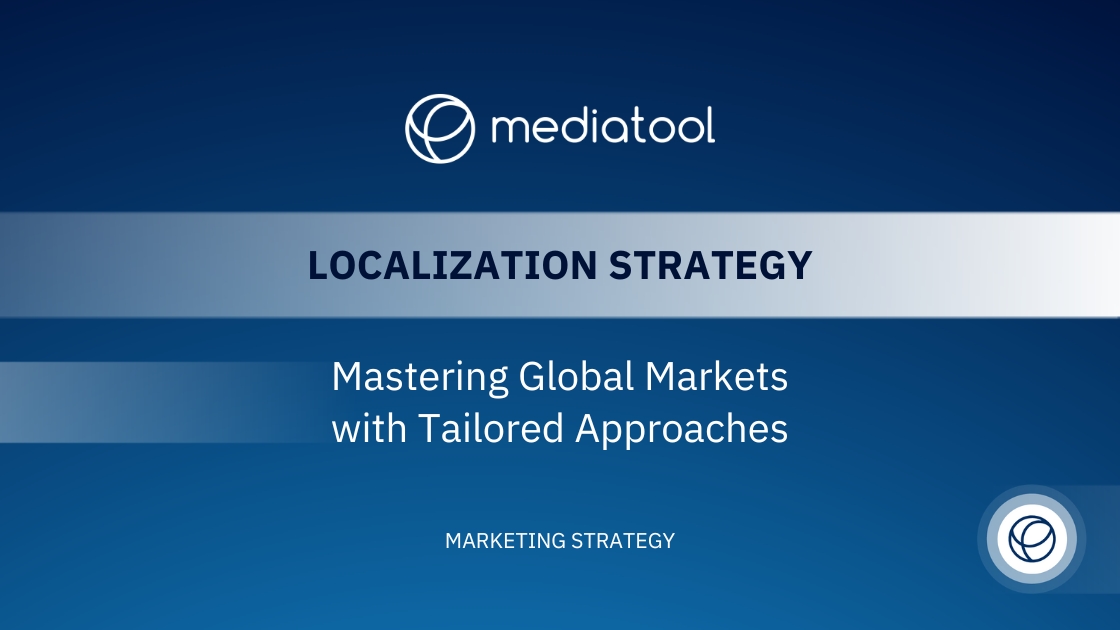Media asset management is the key to creating quick and efficient projects and marketing campaigns. In this fast-paced digital world, it’s more important than ever to produce and release marketing materials as quickly as possible to keep up with ever-changing trends and strong competition.
But that’s easier said than done.
Creating marketing collateral involves using hundreds of photos and videos and producing even more graphics and other assets. These will eventually add up to a ton of files in your system that you’ll have to organize and maintain.
In this article, we talk about what you can do to manage all these media assets to ensure the most efficient workflow for everyone on your team.
Let’s get started.
What Is Media Asset Management?
Media Asset Management (MAM) encompasses the methods and software employed for the efficient handling and organization of multimedia files, including video files, audio files, and rich media content.
This digital asset management system acts as a centralized hub, offering a robust solution for storing vast quantities of media assets, crucial for both internal and external teams involved in video production processes and marketing campaigns.
In today’s digital landscape, companies accumulate a substantial number of rich media files — from massive video files to multimedia assets like infographics and GIFs. These are vital for diverse business processes, including marketing across various platforms and internal needs like presentations.
Without an effective media asset management system, locating specific digital assets for campaigns or post-production processes becomes a formidable challenge.
Media asset management tools not only streamline the organization of digital files but also ensure their preservation for future use.
Advanced features of MAM systems, like version control, cloud storage, and security features, are essential for managing high volumes of video and multimedia files, ensuring an efficient workflow in a post-production environment.
Additionally, these systems support the management of multiple file types, facilitating collaborative editing and seamless integration with various editing tools, thereby enhancing the overall content lifecycle.
Why Is Media Asset Management Necessary?
MAM achieves three simple goals crucial in creating marketing campaigns and work presentations:
Easy Collaboration
Every organization needs a centralized system to save and access shared files. Even those in different divisions should easily find what they need for a specific project.
The simplicity of a centralized system fosters easy collaboration among teams and ensures productivity across the board.
Quick Turnaround of Output
Because all critical files are stored in one central system, retrieval is quick. Consequently, employees can work on their projects whenever they need. This creates a domino effect within the organization.
For example, the company is organizing a fundraising concert. It needs to drum up interest in the event for sponsorship and attendance. This means advertising within their industry and their target audience. Marketing materials must be created and published as soon as possible because they’ll help gather sponsors while hyping up the event for the attendees.
Creating an effective marketing campaign across multiple platforms requires various assets: images, videos, graphics, illustrations, and more. Once these materials are developed and released, another department can begin to send out sponsorship letters. When the sponsors are on board, promotional assets can be created for them.
Media asset management ensures each step of this complex process remains smooth and efficient. Every person in each department has all the assets they need on hand for a smooth workflow. This saves so much time and energy. It will help you meet all of your deadlines, too.
Saves Money
Because you can keep all files accumulated over the years, there’s no need to purchase or repurchase assets. And if there are images or videos that you don’t own, you can easily track down the owner through the centralized system.
Key Use Cases for Media Asset Management
Media Asset Management (MAM) platforms serve several critical functions, each contributing significantly to the efficiency and effectiveness of organizational operations.
Centralized Storage and Accessibility
A key feature of MAM software is its ability to create a centralized media library. This unified repository allows team members, including remote workers or those in global offices, to access all necessary media assets from anywhere. The use of MAM systems ensures that all digital files, including video and multimedia files, are stored in a single location. This centralized system not only streamlines access but also helps in avoiding duplication in asset acquisition, a common issue in large media libraries.
Enhanced Discoverability of Media Assets
MAM platforms enhance the discoverability of media assets through organized and categorized systems. By utilizing relevant keywords and efficient categorization, these asset management systems make it easier for all team members to quickly find and access the digital assets they need for their projects. This feature is particularly beneficial for managing large volumes of multimedia content, including video files, audio files, and other rich media assets. The efficient workflow facilitated by this discoverability is crucial for businesses, especially in the realms of marketing, advertising, and video production processes.
Sharing
Some organizations still share multimedia files through email or online file transfer apps. Unfortunately, these platforms have hard limits that cannot accommodate large assets for high-quality marketing materials. They’re forced to reduce the resolution of the images, which is not ideal. Videos need to be chopped up and sent in bits and pieces, which wastes a lot of time and energy.
Cloud-based media asset management means you can share large files with anyone on your team, wherever they may be.
Controlled Editing Access
MAM software allows for the regulation of editing privileges, ensuring that only designated team members or specific creative teams have the ability to modify media assets. This controlled access is crucial in maintaining the integrity of digital files and multimedia content throughout the post-production process.
Efficient Distribution of Media Assets
One of the primary advantages of media asset management solutions is their ability to distribute media files in a streamlined manner. This efficiency not only saves time but also maximizes organizational resources, leading to improved productivity. MAM systems enable seamless integration with various distribution channels, facilitating quick and efficient sharing of video content, rich media files, and other digital assets.
Enhanced Security Features
Security is a paramount concern in media asset management. MAM platforms provide robust security features, allowing management or team leaders to control access to sensitive media files. This ensures that only authorized personnel can access specific digital assets, thereby safeguarding the organization’s media library against unauthorized use or breaches.
Comprehensive Management for Productivity
Ultimately, the essence of MAM systems lies in their comprehensive asset management capabilities. They provide a centralized system for managing a wide array of digital and multimedia assets, including massive video files, audio files, and rich media content. This management extends to organizing, storing, and retrieving files efficiently, which is essential for maintaining an efficient workflow and high productivity across various business processes, especially in media companies and video production environments.
What’s the Difference Between MAM and DAM?
Understanding the nuances between Media Asset Management (MAM) and Digital Asset Management (DAM) can be subtle, as their functions often overlap. Historically, MAM systems focused specifically on audio and video assets, integral to the video production process and broadcast applications.
However, as the scope of media production expanded to include rich media content like infographics and still photos, MAM systems have adapted to manage a broader range of media files.
Digital Asset Management: A Wider Scope
On the other hand, DAM systems encompass a wider array of digital assets beyond traditional media files. They are essential in organizing and managing diverse multimedia content, including photos, videos, music, and interactive rich media assets.
Digital asset management software is particularly vital in marketing and advertising contexts, where it serves as a centralized library for complete projects, marketing assets, and brand materials, all with detailed metadata, version control, and clear delineation of ownership and access rights. This capability allows for the efficient workflow and repurposing of assets across different ventures.
Specialization of MAM Systems
While MAM software specializes in managing large volumes of audio and video content, facilitating collaborative editing and efficient management of media libraries, DAM systems offer a more versatile approach. DAM software includes tools for distributing a variety of media files and managing brand and marketing materials, making it an asset management solution suitable for a wide range of business processes.
Key Distinctions and Applications
In essence, while all MAM systems are a type of DAM system, not all DAM systems qualify as MAM systems. MAM is tailored for high-volume video and audio file management and often includes specialized editing tools and features for media production.
Conversely, DAM systems have broader applications, capable of handling multiple file types and supporting the entire content lifecycle, from creation to distribution, in both internal and external team environments.
Both systems play a crucial role in digital asset management, offering unique solutions to cater to the varied needs of media companies in the digital transformation era.
Which Is Right for You? DAM or MAM?
Both are efficient and useful asset management systems. You must examine your needs as an organization to choose which one best suits your needs.
DAM is great for marketing-centric organizations. Aside from managing marketing and advertising collaterals, you can leverage custom metadata. It also has an excellent capacity for history tracking and version control of multimedia assets, which can be easily manipulated into other forms.
For companies with heavy audio and video usage, MAM is the ideal process. It’s an excellent tool for storing and managing large-format files for easy access. MAM also has a fantastic workflow for video creation.
The Best Features of Media Asset Management Software
If there’s high demand for large-format audio and video outputs from your organization, MAM is the right process and software for you. However, not all MAM software is created equal—some are better than others.
Here are some tips to help you choose the right MAM system for your organization:
Customization for Efficient Workflow
Customization is a pivotal feature in MAM software. It’s important that the system aligns with your organization’s specific requirements to manage large media libraries. The ability to tailor the software ensures that you have a comprehensive asset management solution, capable of streamlining workflow efficiently. This includes controlled access features, allowing for customized internal and external sharing systems, crucial for efficient management of digital assets like video files, audio files, and other rich media content.
Scalability to Accommodate Growth
Scalability is another vital aspect of a good MAM system. Your chosen media asset management solution should be capable of growing alongside your business, accommodating an increasing number of users and larger volumes of digital and multimedia files. This scalability ensures that the system remains effective as your organization’s asset management needs evolve, particularly important for companies involved in video production and other media-intensive processes.
Cost-Effectiveness and Value
When evaluating MAM software options, consider the balance between cost and functionality. The ideal media asset management platforms should offer a range of features and capabilities that justify its price, providing good value for money. This includes the capacity to manage high volumes of video content, support for multiple file types, and features that enhance the post-production process.
Reliable Customer Support
Effective customer support is essential for any MAM system. Ensure that the platform you choose offers reliable support, ideally available during standard office hours, if not around the clock. The support team should be equipped to assist with queries, troubleshoot issues, and guide through the installation process, contributing to a seamless integration and efficient management of your media assets.
Conclusion
Incorporating Media Asset Management (MAM) or Digital Asset Management (DAM) systems can significantly enhance the operational efficiency of organizations that regularly handle a high volume of audio and video files.
These systems provide a centralized solution for storing, managing, sharing, and archiving a wide array of multimedia assets, streamlining media management processes across the board.
MAM software, in particular, is designed to support the needs of media companies and creative teams, offering a comprehensive library where all digital and rich media content can be accessed and edited by authorized personnel.
This centralization not only facilitates ease of access but also ensures a more efficient workflow in managing large media libraries, crucial for video editors and other media professionals.
For companies aiming to boost efficiency and productivity, integrating DAM and MAM systems into their marketing technology (MarTech) stack is a valuable strategy. These asset management solutions play a pivotal role in optimizing the entire process of managing high-volume video and audio files, contributing significantly to the overall success of marketing campaigns.
Mediatool offers additional avenues to enhance marketing efficiencies. Mediatool enables businesses to plan, measure, evaluate, and improve their marketing campaigns through a unified platform. This holistic approach to marketing management, combined with the robust capabilities of DAM and MAM systems, can transform your marketing workflows, driving improved results and streamlined operations.
Take a tour of Mediatool to see how you can plan, measure, evaluate and improve your marketing campaigns, all from one unified platform.





